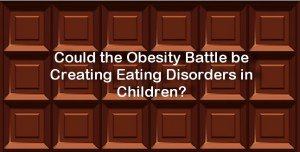- Calls to this hotline are currently being directed to Within Health, Fay or Eating Disorder Solutions
- Representatives are standing by 24/7 to help answer your questions
- All calls are confidential and HIPAA compliant
- There is no obligation or cost to call
- Eating Disorder Hope does not receive any commissions or fees dependent upon which provider you select
- Additional treatment providers are located on our directory or samhsa.gov
When Children with Obesity Develop Eating Disorders
Contributor: Amy M. Klimek, MA, LCPC, Director of Program Development, Eating Disorder Program Coordinator, Timberline Knolls
 Prevalence of Childhood Obesity
Prevalence of Childhood Obesity
From the White House to local communities, childhood obesity is an important topic throughout our country today.
The latest figures from the Centers for Disease Control and Prevention (CDC) show that the percentage of children with obesity in the United States has more than tripled since the 1970s. This breaks down to about one in five school-aged children between the ages of six to nineteen being considered obese [1].
The implications of childhood obesity are far reaching, including potential physical and psychological impact on the child, families and the surrounding communities. Children who are obese experience bullying more than normal weight peers, as well as are more likely to suffer from depression, social isolation and lower self-esteem [2].
For those in the eating disorder field, this topic is particularly difficult for a variety of reasons.
The Difference Between Being Overweight and Obese
In discussions about children and weight, the word obesity is used quite liberally; and indeed, many children would fall into this category regardless of the barometer that is used. Yet, there are also children who could be defined as overweight, due to their BMI, but nevertheless are healthy.
If at an early age, these children are labeled as obese and set on a course of dieting, their entire relationship with food and perception of themselves may be in jeopardy, to say nothing of the possibility of developing anorexia or bulimia.
Society’s View on Obesity
Our society is not kind to those who are obese. It is no different with children.
 If a child is overweight, other children often tease her harshly. Incredibly, the old standards used decades ago remain popular, calling her “fatty”, “cow”, or “thunder thighs.”
If a child is overweight, other children often tease her harshly. Incredibly, the old standards used decades ago remain popular, calling her “fatty”, “cow”, or “thunder thighs.”
For young girls, these words are profoundly painful and can become a part of her identity.
As she moves into the teenage years, the bullying only becomes worse through social media teasing or comparison through social media influences of the “ideal body,” or what defines “beauty”.
Bullying and Eating Disorders
Whether the bullying is done through photos, commentary, or both, it is just more salt poured into deep wounds. Bullying creates the ideal environment for an eating disorder to take hold.
This adolescent may begin to use behaviors to reverse the pain she had endured because of her weight through strategies such as restricting to “control” calorie intake. The result is all too predictable. She loses weight and affirmation is not far behind. Her parents, proud of her efforts, reinforce her.
How Eating Disorders Start
The bullying decreases; her commensurate emotional embarrassment does likewise. She looks better in clothes. She may even become popular, since in the shallow, superficial world of adolescence, skinny often translates into popularity. In no time, she can become addicted to the behavior and develop anorexia.
Conversely, in an effort to deal with the crushing emotional pain of her existence, she may move toward food, instead of away from it. She may begin to binge and purge.
The food provides much needed comfort, and she believes vomiting will rid her body of the food’s caloric consequences. She does this in private; it becomes her secret method of coping. In no time, she can become addicted to this behavior and develop bulimia.
Whether an overweight child copes through restricting food or bingeing and purging is due to myriad factors such as family dynamics, age, maturation, etc.
 Adolescents can develop a dissatisfied relationship with their bodies and disorder relationship with food, resulting in a future of struggling to obtain balance and happiness within in themselves.
Adolescents can develop a dissatisfied relationship with their bodies and disorder relationship with food, resulting in a future of struggling to obtain balance and happiness within in themselves.
In order to support a child that may be facing these complex issues involved with overlapping obesity and eating disorders, it is important to connect with professional treatment team as early as possible. Eating disorder specialists and experts, particularly those who specialize in treating children, can guide a child toward a journey of overall healing.
 About the Author: As the Eating Disorder Program Coordinator, Amy facilitates supervision for Eating Disorder Specialists, offers support through training to TK staff, and provides education on eating disorders to the community.
About the Author: As the Eating Disorder Program Coordinator, Amy facilitates supervision for Eating Disorder Specialists, offers support through training to TK staff, and provides education on eating disorders to the community.
Amy started at Timberline Knolls as a Behavioral Health Specialist. As such, she provided support at the milieu level for all residents. She transitioned to Eating Disorder Specialist in 2012, supporting healing in present moment experiences for residents who struggled with eating disorders and body image. Amy earned a Bachelor of Science Degree in Sociology from the University of Illinois. She was awarded a Master’s Degree in Counseling specializing in both community and school counseling from Lewis University.
References:
[1]: Centers for Disease Control and Prevention, “Child Obesity Facts”, https://www.cdc.gov/healthyschools/obesity/facts.htmThe opinions and views of our guest contributors are shared to provide a broad perspective of eating disorders. These are not necessarily the views of Eating Disorder Hope, but an effort to offer discussion of various issues by different concerned individuals.
We at Eating Disorder Hope understand that eating disorders result from a combination of environmental and genetic factors. If you or a loved one are suffering from an eating disorder, please know that there is hope for you, and seek immediate professional help.
Published: June 26, 2017.
Reviewed By: Jacquelyn Ekern, MS, LPC on June 26, 2017.
Published on EatingDisorderHope.com

